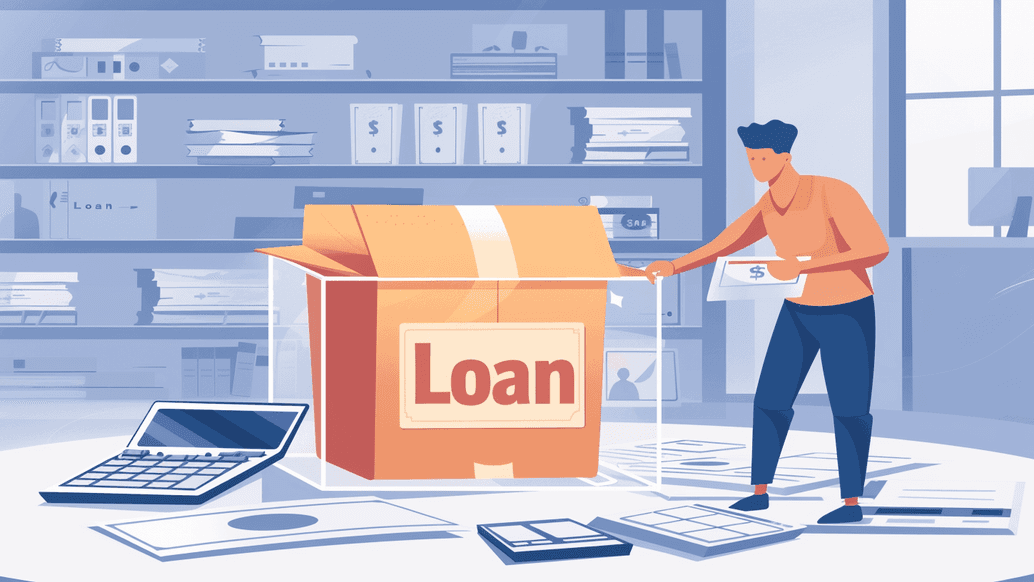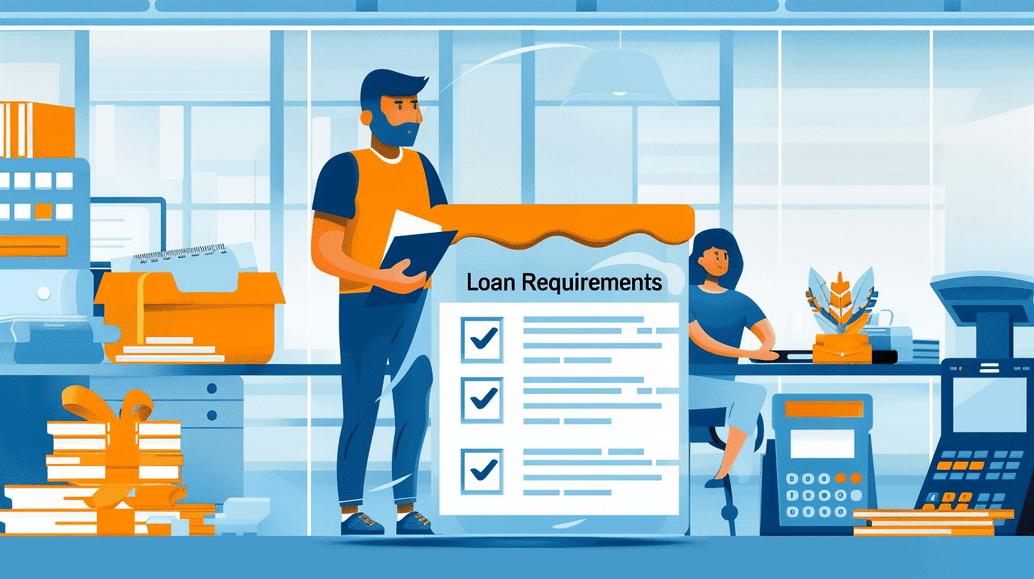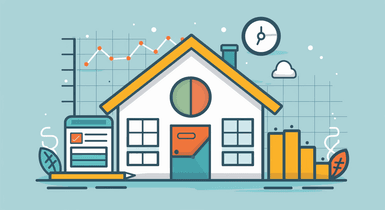Conventional Loan Down Payment: What You Need to Know

Standing on the verge of buying a home, one of the most crucial steps to take is to secure the right type of mortgage. Conventional loans are the most popular option for homeowners due to their flexibility and favorable terms. At the same time, there is a whole set of aspects you need to comply with to qualify for this type of loan. One key aspect is down payment requirements. They play a vital role in determining your eligibility, monthly payments, and overall financial commitment.
By grasping the nuances of a down payment for a conventional loan, you can better prepare for the home-buying process, make informed decisions, and plan your finances wisely. So, in this guide, we’ll look into conventional mortgage down payment basics, including what it is, how much you need, and what factors can influence the required amount.
What Are Conventional Loans?

To better understand what drives conventional loan down payment percentage calculations, let’s first define this type of lending and how it works.
A mortgage nearly any buyer would prefer for a home purchase, it is issued by private lenders, such as banks, credit unions, and mortgage companies. In contrast to FHA, VA, or USDA loans, it is not insured or guaranteed by the federal government and hinges on the rules set by Fannie Mae and Freddie Mac. These are two government-sponsored organizations that buy and guarantee real estate loans in the secondary mortgage market. They acquire conventional loans to help maintain liquidity in the mortgage market and help lenders free capital to offer more loans to consumers. To make mortgages eligible for such a purchase, lenders should observe loan limits defined by the Federal Housing Finance Administration. In 2024, the national limit for a single-unit property is $766,550.
Key Features of Conventional Loans
Here is what distinguishes conventional loans from other types of mortgages:
- Fixed and Adjustable Rates: These loans can entail either fixed interest rates, where the rate remains constant for the life of the loan or adjustable rates that might change periodically based on market conditions.
- Various Loan Terms: Typically, the term of such loan ranges from 15 to 30 years, with 30-year mortgages widely prevailing and shorter-term options being a bit less popular.
- Down Payment Flexibility: A conventional loan down payment could be as low as 3% and go anywhere higher, with a recommended average of 20%.
- Private Mortgage Insurance (PMI): Borrowers going for a down payment on a conventional loan below 20% should pay an annual PMI that costs up to 1.5% of the loan amount. Meant to secure a lender against default risks, it will be canceled as soon as the loan-to-value ratio hits 80%.
- No Government Fees: Unlike FHA or VA loans, conventional mortgages do not entail upfront or ongoing government fees, which can make them less expensive over time.
Eligibility Criteria for Conventional Loans
Qualifying for a conventional loan generally requires meeting stricter criteria compared to government-backed loans. Primary conventional loan requirements include:
- Credit Score: The required credit score for a conventional loan is 620 or higher. However, with 700+, you can secure a lower interest rate and more favorable terms.
- Debt-to-Income Ratio: Lenders assess how a borrower’s monthly debt payments compare to their gross income. A safe bracket for that ratio is 43% to 45%, though a higher down payment can raise that limit.
- Down Payment: One of the best things about conventional mortgages is that they allow for a small down payment of only 3%, which makes them available even to home buyers on a budget.
- Stable Income and Employment: Most lenders would consider these factors to verify the borrower’s financial standing and reliability.
- Property Requirements: This type of loan is good for various property types, including single-family homes, condos, and multifamily units. However, the asset’s value should match the loan amount.
Conventional Loan Requirements for a Down Payment

A down payment is an upfront, lump-sum payment a borrower should make when purchasing a property. It stands for a percentage of the property’s purchase price and is typically paid in cash during mortgage loan settlement.
The down payment is a critical component of the home-buying process since it reduces the borrowed amount, thus lowering the loan-to-value (LTV) ratio and demonstrating the debtor's commitment and financial stability to the lender.
How Much Is a Down Payment for a Conventional Loan?
The minimum initial contribution can vary depending on several factors, including the borrower’s financial situation, the lender's requirements, and specific loan programs. Traditionally, a 20% down payment is recommended for the borrowers to avoid PMI payments and gain better interest rates and loan terms. Basically, the higher the down payment you make, the lower the interest rate and monthly payment you’ll win, and the less total interest you’ll pay over the loan life.
First-time home buyers who haven’t owned a home within the last 3 years and low-income borrowers could qualify for a minimal down payment of only 3% under special loan programs such as Fannie Mae’s HomeReady and Freddie Mac’s Home Possible. In figures, it will translate into a $9,000 contribution for a $300,000 purchase, for example.
According to the records of the National Association of Realtors (NAR) as of 2023, first-time buyers typically make an 8% down payment for a home loan while repeat buyers on average pay 19%.
What Affects the Down Payment Amount?
How much do you need down for a conventional loan? While minimum contribution requirements can vary, several factors directly influence the down payment amount. Borrowers should be aware of them to avoid unpleasant surprises when applying for a loan.
- Borrower’s Financial Standing: There are a number of factors determining your overall financial standing and impacting the amount of initial contribution you’ll be required to make when closing a conventional mortgage. The primary aspects are your credit score and DTI ratio. Generally, borrowers with higher credits and lower DTIs are viewed as less risky and may qualify for better loan terms and lower down payment.
- Loan Amount: Larger loan amounts, such as those exceeding the established loan limits, often call for higher down payments due to the increased risk to the creditor.
- Property Type: Loans for second homes or investment properties make lenders feel less comfortable due to their less stable value brackets and require heftier down payments compared to primary residences.
- Lender Policies: Apart from standard rules, each lender might have their own down payment requirements in place. So, the borrower should shop around and compare offers from multiple creditors to find the best terms for their situation.
- Market Conditions: In markets where home prices show a consistent tendency to rise, sellers may favor buyers who can make larger down payments. It demonstrates the borrower’s financial readiness and reduces the risk of the sale falling through.
Conclusion
A conventional loan is an efficient financing tool for different financial situations and goals. Whether you buy your first house or seek to refinance an existing mortgage, it will get you covered. At the same time, the down payment for a conventional loan is a vital factor, affecting the loan’s cost, terms, and the borrower’s financial commitment. So, you should clearly understand how it’s calculated and what you need to do to qualify for an amount that will best match your financial situation and needs.




